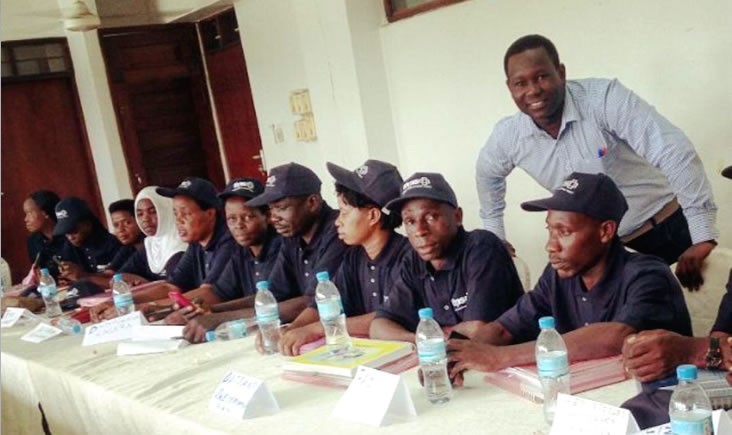- What We Do
- Agriculture and Food Security
- Democracy, Human Rights and Governance
- Economic Growth and Trade
- Education
- Ending Extreme Poverty
- Environment and Global Climate Change
- Gender Equality and Women's Empowerment
- Global Health
- Water and Sanitation
- Working in Crises and Conflict
- U.S. Global Development Lab


Nicholas R. Graff, former HIV/AIDS Implementation Science Research Intern, is pursuing his Masters of Public Health at the University of Washington, Department of Epidemiology, in the Global Health track. His research focuses on improving HIV care and treatment for key populations in East Africa.
Recent Blog Posts
- Highlights from the Field: Prepping PrEP in Lesotho and South Africa
Allison M. McFall and Delivette Castor - September 8, 2017 - Highlights from IAS – How Optimized Antiretrovirals like Dolutegravir are Accelerating Access to Improved HIV Treatment
Talia Dweck - July 24, 2017
In August of this year, I conducted a study monitoring visit in Dar es Salaam, Tanzania, to get some updates on one of the key studies we support in the country. One of the studies we visited was the U.S. President's Emergency Plan for AIDS Relief (PEPFAR) Evaluation of the Impact of a Community Health Agency Intervention on ART Retention in Tanzania (called the Tanzania Community ART Study for short). In this project, community health agents or guides, who are not medical professionals, are being trained to deliver lifesaving antiretroviral therapy (ART) to people living with HIV (PLHIV). This study was designed to evaluate the impact of a new method of delivering care and treatment for PLHIV through community-based services.
Motivations for a Community-Based Approach
PEPFAR is committed to achieving ambitious goals to bring the global HIV/AIDS epidemic under control. Known as 90-90-90, the goals are: By 2020, 90 percent of all people living with HIV will know their HIV status; 90 percent of all people with diagnosed HIV infection will receive sustained antiretroviral therapy; and 90 percent of all people receiving antiretroviral therapy will have viral suppression. The U.S. Agency for International Development (USAID) Office of HIV/AIDS is overseeing a wide array of activities to support PEPFAR's strategic approach to epidemic control.
Today, we have many of the tools we need to achieve these goals, but challenges remain, and the fight against HIV is far from over. Often with as little as one pill per day, ART not only enables PLHIV to regain – or maintain – good health, but also halts further spread of the virus. Despite these advancements and tremendous progress in combatting the epidemic, more than a million people died of HIV/AIDS last year, including 36,000 specifically in Tanzania, and close to 2 million people were newly infected with HIV.
It has become clear that we need more than just good scientific knowledge on antiretroviral treatment to actually reach people most in need. This is why implementation science, like the Tanzania Community ART Study, is critical for bridging the gap between what we know about how to treat and prevent HIV and what we are accomplishing through HIV programs. Bold new approaches are needed to reach the 90-90-90 targets, and with evidence suggesting social support is important to treating PLHIV, a community-based approach holds promise.
Evaluating Community-based HIV Service Delivery
The Tanzania Community ART Study is being implemented by Project SOAR and several partners, including Population Council, Ifakara Health Institute, Tanzania Health Promotion Support and the Tanzania National AIDS Control Program. It is a PEPFAR-funded study supported by USAID, the U.S. Centers for Disease Control and Prevention, and the Department of Defense. If shown to be effective, this community HIV service delivery model may be an important additional option for advancing epidemic control in Tanzania.
Traditionally, PLHIV are required to attend regular appointments with healthcare providers at centralized healthcare facilities. In Tanzania, this can mean long travel and wait times at the clinic for patients. This can place a heavy burden on PLHIV, as they rack up additional expenses due to travel and time away from work. The Tanzania Community ART Study proposes to reduce this burden on patients by bringing the ART to them through monthly community meetings. Community meetings like this also provide a chance for PLHIV to meet each other and discuss living with HIV – an often stigmatized disease – in a safe environment. The hope is that people attending these community HIV services will be motivated to keep coming back to receive their medicine and see greater improvements in their health compared to people who are receiving standard HIV care.
During our visit, we were impressed with the progress being made by the study team, and we look forward to the results of this study.







Add new comment